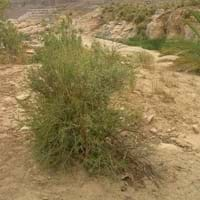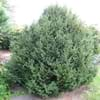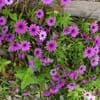Life Span
Perennial
Perennial
Type
Flowering Plants, Shrub
Broadleaf Evergreen
Origin
North Africa
Hybrid origin
Types
Not Available
Not Available
Number of Varieties
Not Available
Habitat
Desert, Rocky Mountains
hedge rows, Shady Edge, Woodland Garden Dappled Shade
USDA Hardiness Zone
Not Available
6-9
AHS Heat Zone
Not Available
Not Available
Sunset Zone
Not Availble
21,22
Habit
Bushy, Evergreen
Pyramidal
Flower Color
White
Light Yellow
Flower Color Modifier
Bicolor
Bicolor
Fruit Color
Black, Blue
Not Available
Leaf Color in Spring
Green, Dark Green
Green, Dark Green
Leaf Color in Summer
Dark Green
Dark Green
Leaf Color in Fall
Green, Dark Green
Dark Green
Leaf Color in Winter
Green
Dark Green
Plant Season
Summer
Spring, Summer, Fall, Winter
Sunlight
Full Sun
Full Sun, Partial Sun
Type of Soil
Clay, Loam, Sand
Loam, Sand
The pH of Soil
Acidic, Neutral
Acidic, Neutral
Soil Drainage
Moist but well drained
Well drained
Bloom Time
Late Summer, Summer
Spring
Tolerances
Moisture
Pollution
Where to Plant?
Container, Pot
Container, Ground, Pot
How to Plant?
Seedlings, Semi-hardwood cuttings
Root Division, Stem Cutting
Plant Maintenance
Medium
Medium
Watering Requirements
Needs less watering
Needs more water during establishment, Never Over-water, occasional watering once established
In Summer
Ample Water
Lots of watering
In Spring
Average Water
Moderate
In Winter
Less Watering
Average Water
Soil pH
Acidic, Neutral
Acidic, Neutral
Soil Type
Clay, Loam, Sand
Loam, Sand
Soil Drainage Capacity
Moist, Well drained
Well drained
Sun Exposure
Full Sun
Full Sun, Partial Sun
Pruning
Prune after flowering, Prune for shortening long shoots, Remove dead or diseased plant parts
Prune ocassionally, Remove branches, Remove branches that rub together, Remove crossing or rubbing branches, Remove damaged leaves, Remove dead branches, Remove dead leaves, Remove dead or diseased plant parts
Fertilizers
Any balanced general purpose fertilizer
All-Purpose Liquid Fertilizer, Fertilize in early to mid-summer
Pests and Diseases
Healthy tree
Red blotch
Plant Tolerance
Moisture
Pollution
Flower Petal Number
Not Available
Single
Fragrant Bark/Stem
Yes
No
Foliage Texture
Fine
Fine
Foliage Sheen
Glossy
Glossy
Attracts
Butterflies
Bees, Birds
Allergy
Not Available
Poisonous
Aesthetic Uses
Showy Purposes
Used for making hedges
Beauty Benefits
Acne, Good for skin
Not Available
Environmental Uses
Air purification, Food for birds
Air purification
Medicinal Uses
Antibacterial, anti-cancer, Antidiabetic, Heart problems, Kidney problems, Respiratory Disorders, Thyroid problems
Alterative, Antirheumatic, Arthritis, cathartic, Cholagogue, Detoxification, Diaphoretic, Febrifuge, HIV/AIDS, Homeopathy, Immunity, Odontalgic, Sedative, Tonic, Vermifuge
Part of Plant Used
Flowers, Leaves
Flowers, Leaves, Wood
Other Uses
Used as essential oil, Used in herbal medicines
Used as a dye, Used for woodware
Used As Indoor Plant
No
Yes
Used As Outdoor Plant
Yes
Yes
Garden Design
Container, Edible, Fruit / Fruit Tree, Shade Trees, Tropical
Container, Edging, Feature Plant, Foundation, Hedges, Mixed Border
Botanical Name
Myrtus nivellei
BUXUS 'Green Mountain' COPF
Common Name
Saharan myrtle
Boxwood, Green Mountain Boxwood
In Hindi
Saharan myrtle
Buxus Green Mountain Tree
In German
Saharan myrtle
Buxus Green Mountain Baum
In French
myrte subsaharienne
Buxus Green Tree Montagne
In Spanish
mirto subsahariana
Buxus árbol verde de la montaña
In Greek
Σαχάρας μυρτιά
Buxus Green Mountain Tree
In Portuguese
murta Saharan
Buxus Árvore verde da montanha
In Polish
mirt Subsaharyjskiej
Buxus Green Mountain Drzewo
In Latin
myrto Saharan
Buxus Viridis ligno
Phylum
Magnoliophyta
Magnoliophyta
Class
Magnoliopsida
Magnoliopsida
Order
Myrtales
Euphorbiales
Family
Myrtaceae
Buxaceae
Clade
Angiosperms, Eudicots, Rosids
Angiosperms, Eudicots
Tribe
Not Available
Not Available
Subfamily
Not Available
Not Available
Season and Care of Saharan Myrtle and Buxus Green Mountain
Season and care of Saharan Myrtle and Buxus Green Mountain is important to know. While considering everything about Saharan Myrtle and Buxus Green Mountain Care, growing season is an essential factor. Saharan Myrtle season is Summer and Buxus Green Mountain season is Summer. The type of soil for Saharan Myrtle is Clay, Loam, Sand and for Buxus Green Mountain is Loam, Sand while the PH of soil for Saharan Myrtle is Acidic, Neutral and for Buxus Green Mountain is Acidic, Neutral.
Saharan Myrtle and Buxus Green Mountain Physical Information
Saharan Myrtle and Buxus Green Mountain physical information is very important for comparison. Saharan Myrtle height is 200.00 cm and width 200.00 cm whereas Buxus Green Mountain height is 152.40 cm and width 91.44 cm. The color specification of Saharan Myrtle and Buxus Green Mountain are as follows:
Saharan Myrtle flower color: White
Saharan Myrtle leaf color: Green and Dark Green
Buxus Green Mountain flower color: Light Yellow
- Buxus Green Mountain leaf color: Green and Dark Green
Care of Saharan Myrtle and Buxus Green Mountain
Care of Saharan Myrtle and Buxus Green Mountain include pruning, fertilizers, watering etc. Saharan Myrtle pruning is done Prune after flowering, Prune for shortening long shoots and Remove dead or diseased plant parts and Buxus Green Mountain pruning is done Prune ocassionally, Remove branches, Remove branches that rub together, Remove crossing or rubbing branches, Remove damaged leaves, Remove dead branches, Remove dead leaves and Remove dead or diseased plant parts. In summer Saharan Myrtle needs Ample Water and in winter, it needs Less Watering. Whereas, in summer Buxus Green Mountain needs Lots of watering and in winter, it needs Average Water.





